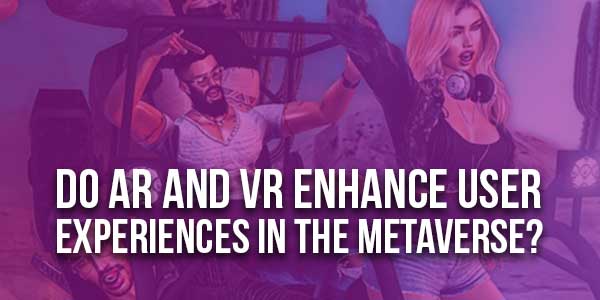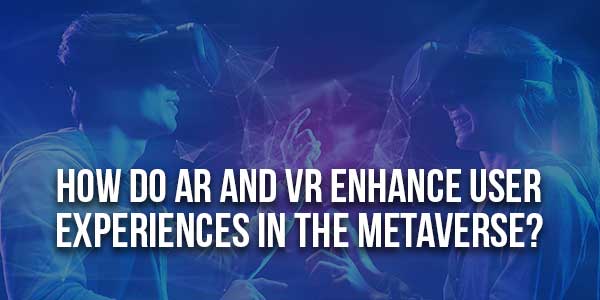
The concept of the metaverse has gained significant attention in recent years. With technological advancements, augmented reality (AR) and virtual reality (VR) have emerged as powerful tools to enhance user experiences within the metaverse. These technologies are revolutionizing various industries and shaping the future of digital experiences. A key player in this transformation is the VR app development company, which specializes in creating immersive and interactive environments. By leveraging the potential of AR and VR, these companies are at the forefront of developing cutting-edge applications that bring the metaverse to life.
Whether designing virtual reality games, creating virtual training simulations, or building immersive virtual tours, VR app development companies are driving innovation and pushing the boundaries of what’s possible in the metaverse. As these technologies evolve, we can expect even more exciting developments from VR app development companies, ultimately shaping how we interact with digital worlds and transforming industries across the board.
Table of Contents
The Definition Of The Metaverse:
The metaverse refers to a virtual universe consisting of interconnected digital spaces where people can interact with each other and computer-generated environments in real time. It is a physical and virtual reality convergence, creating a shared space that allows users to engage with various media, content, and experiences.
Understanding Augmented Reality (AR):
AR is a technology that overlays digital content in the real world, enriching the user’s perception and interaction with their physical surroundings. Using devices such as smartphones or AR headsets, users can experience a blended reality where virtual objects and information coexist with the real environment.
The Power Of Virtual Reality (VR):
VR provides users with an immersive and simulated experience by transporting them to a computer-generated environment. Through specialized headsets and controllers, users can perceive and interact with this artificial reality as if it were real. VR creates a sense of presence and enables users to explore and interact with virtual worlds.
Enhancing User Experiences With AR And VR In The Metaverse:
Interactive Social Interactions:
AR and VR technologies facilitate social interactions within the metaverse. Users can communicate, collaborate, and connect worldwide in shared virtual spaces. These technologies enable realistic avatars and lifelike gestures, making social interactions more engaging and immersive than traditional online platforms.
Immersive Gaming And Entertainment:
AR and VR have revolutionized the gaming and entertainment industry within the metaverse. Users can enter virtual worlds, participating in exciting adventures and immersive narratives. With realistic graphics, responsive haptic feedback, and spatial audio, AR and VR enhance the overall gaming experience, transporting players to new realms of excitement.
Virtual Tourism And Exploration:
AR and VR enable virtual tourism, allowing users to explore remote locations, historical sites, and cultural landmarks without physically traveling. Through immersive 360-degree videos and virtual tours, users can visit exotic destinations, experience different cultures, and better understand the world around them.
Education And Training In A Virtual Environment:
AR and VR have significant potential in education and training within the metaverse. Students can engage in interactive and immersive learning experiences, visualizing complex concepts and simulations. VR-based training programs offer realistic scenarios for medical professionals, pilots, and other specialized fields, enhancing their skills and decision-making abilities.

Revolutionizing E-Commerce And Retail:
AR and VR have transformed e-commerce and retail by providing virtual shopping experiences. Users can visualize products in their own space using AR overlays or browse virtual stores using VR headsets. This technology offers a more personalized and interactive shopping experience, increasing customer engagement and reducing the need for physical stores.
Collaborative Workspaces And Remote Collaboration:
AR and VR enable remote collaboration and virtual workspaces within the metaverse. Teams can gather in virtual meeting rooms, share and manipulate 3D models, and collaborate on projects regardless of geographical location. These technologies foster innovation, streamline communication, and improve productivity for distributed teams.
Healthcare And Therapy Applications:
AR and VR have significantly advanced healthcare and therapy within the metaverse. Medical professionals can utilize AR overlays during surgeries, providing real-time information and guidance. VR-based therapy offers immersive environments for treating phobias, PTSD, and anxiety disorders, providing a safe and controlled space for patients to confront their fears.
Augmented Workforce And Industrial Applications:
AR has transformed industrial sectors by providing real-time information, instructions, and assistance to workers. Through AR-enabled devices, technicians can access manuals, schematics, and remote expert support, improving efficiency and reducing errors. AR also enhances safety by overlaying warning signs and highlighting potential hazards in industrial settings.
Architectural Visualization And Design:
AR and VR have revolutionized the architectural and design industries within the metaverse. Architects and designers can create immersive virtual environments to showcase their projects, allowing clients to experience spaces before they are built. AR overlays enable visualizing future buildings within the existing environment, aiding urban planning and development.
AR And VR In Sports And Live Events:
AR and VR have enriched the sports and live events experience within the metaverse. Fans can enjoy immersive live streaming of matches, accessing different camera angles and statistics in real-time. VR headsets provide a front-row seat experience, allowing users to feel the excitement of being present at the event from the comfort of their homes.
Challenges And Future Developments:
While AR and VR have made remarkable progress, challenges remain. Improving hardware affordability, reducing motion sickness, enhancing content creation tools, and ensuring user privacy are key areas for development. As technology advances, we can expect more realistic and seamless experiences within the metaverse.
Conclusion:
AR and VR technologies have created a paradigm shift in user experiences within the metaverse. From interactive social interactions to revolutionizing industries such as gaming, education, e-commerce, and healthcare, the potential of AR and VR is vast. As the metaverse continues to evolve, these technologies will play a pivotal role in shaping the future of digital experiences.

 About the Author:
About the Author:
















Be the first to write a comment.